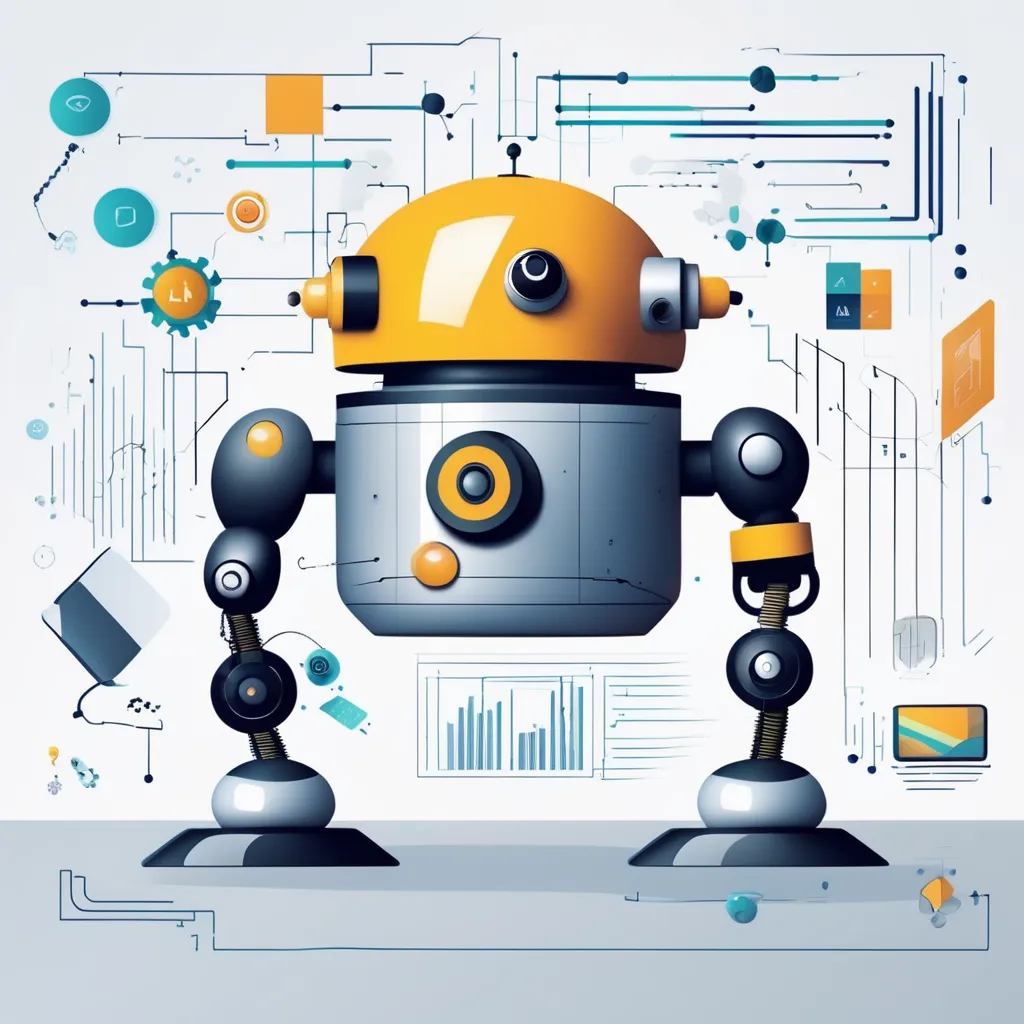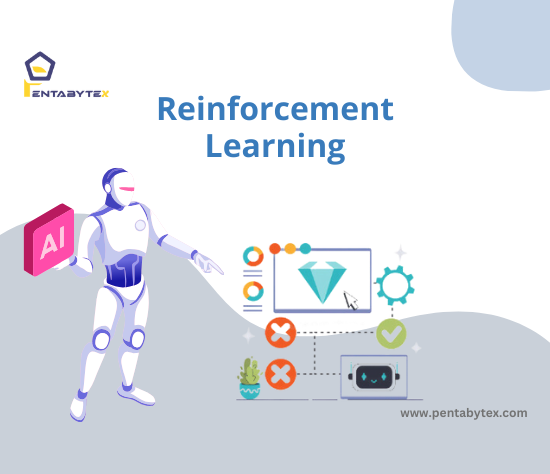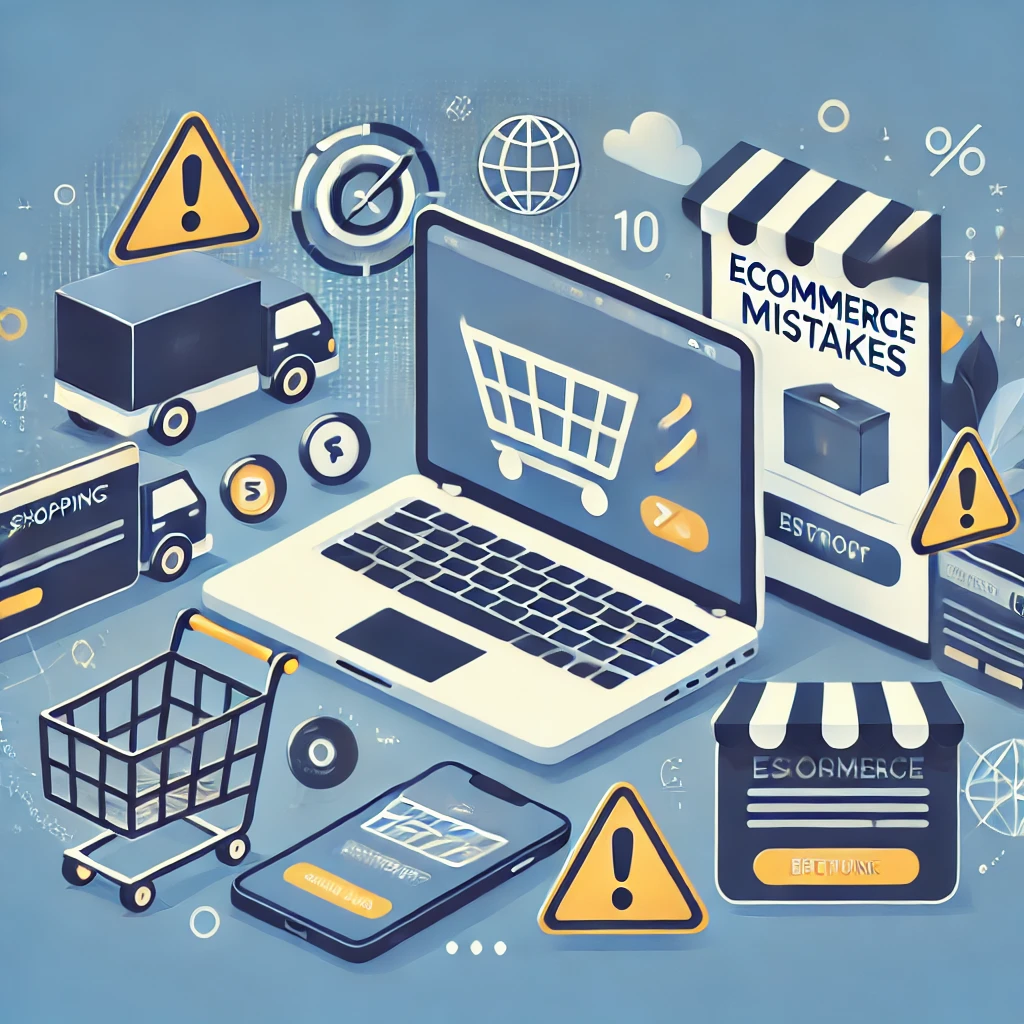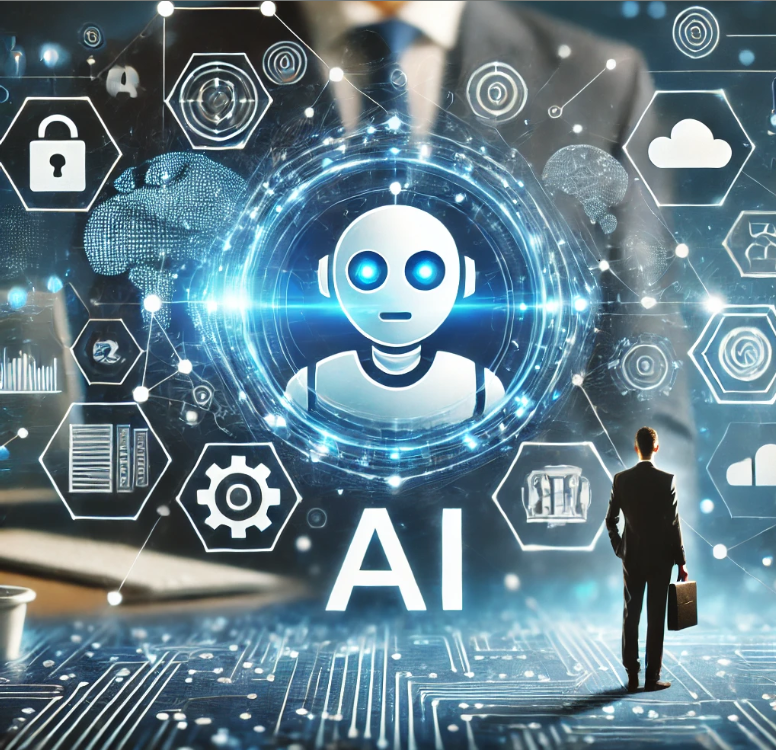In an ever-changing world regarding artificial intelligence (AI), reinforcement learning (RL) captures both researchers’ hopes and industry leaders’ imaginations. It is quite different from other conventional methods of machine learning which operate using pre-labeled datasets. Because RL learns from its surroundings, it has become remarkably versatile and forceful.
Whatever your position whether you are a tech fanatic, an AI expert, or just someone interested in future technological aspirations for mankind; it is necessary to understand reinforcement learning.
What is Reinforcement Learning?
Do you know how a dog can learn new tricks? It receives treats for good behavior and gets nothing for bad behavior. Over time, the dog learns which actions lead to rewards.
This concept is also applied in reinforcement learning where an individual learns decision-making through taking various actions within a space where they hope to get as much payoff as possible.
So, rather than being instructed on what is right at each interval (like in supervised learning), the agent finds out which actions yield the most reward by trying them out and learning from the consequences.
Key Concepts in Reinforcement Learning
- Agent: The decision-maker.
- Environment: The external system the agent interacts with.
- Action (A): The set of all possible moves the agent can make.
- State (S): The current situation or configuration returned by the environment.
- Reward (R): The feedback from the environment after an action, indicating success or failure.
- Policy (π): The strategy that the agent employs to determine its actions based on the current state.
- Value Function (V): Predicts the expected reward for each state, guiding the agent towards the best actions.
The agent’s goal is to learn a policy that maximizes the cumulative reward over time, balancing immediate and future gains.
Popular Reinforcement Learning Algorithms
Several algorithms form the basic concept of reinforcement learning, each one having its distinct benefits and uses. Below are some of the most popular ones:
1. Q-Learning
Q-learning is an important reinforcement learning algorithm that focuses on determining the expected values associated with the actions in certain states.
Known as Q values, these guide the agent in choosing actions that lead to maximum rewards. The Bellman equation is utilized for updating the Q values iteratively by Q-learning.
2. Deep Q-Networks (DQN)
This type of neural network merges Q-learning and deep networks to deal with high-dimensional settings. It was pioneered by DeepMind and made popular for its ability to play Atari games like a pro, learning from raw pixels.
3. Policy Gradient Methods
Policy gradient methods optimize policies that map states into actions directly whereas Q-learning is focused on determining values. Continuous action space environments benefit most from these models.
The REINFORCE and Proximal Policy Optimization (PPO) are some of the notable algorithms in this category.
4. Actor-Critic Methods
The Actor-Critic Combines the advantages of value-based methods and policy-based. While the actor learns the policy, the critic works on value function thus resulting in a more stable and efficient learning process. A notable example is the Advantage Actor-Critic (A2C) algorithm.
Real-World Applications of Reinforcement Learning

Reinforcement learning’s ability to learn through interaction, reinforcement learning (RL) has become a useful tool in many real-world applications. Some important fields where RL is currently having a substantial effect:
1. Gaming
Reinforcement learning has transformed the way AI is used in gaming. It empowers AI to learn strategic planning and decision-making, often outmatching human prowess, from conquering intricate games.
For example, Go and StarCraft II can be used to create advanced non-playable characters (NPCs) in video games. Think about being involved in a game where the artificial intelligence opponent can detect your moves and adjust its strategies.
2. Robotics
Robots that use reinforcement learning (RL) can perform tasks easily. Such tasks include grasping objects, navigating an environment, or assembling products.
This ability to learn from interaction in robotics allows them to tackle new jobs and adjust themselves to different environments; hence they become more versatile and efficient.
Robotic grasping is one example of RL in action.

Imagine an industrial area where robots autonomously learn to execute intricate assembly operations; consequently, such machines decrease human involvement thereby raising output levels.
3. Autonomous Vehicles
For most of these self-driving cars, reinforcement learning is the basis for navigating intricate road environments, making real-time decisions, and enhancing route safety as well as efficiency.
The RL in autonomous vehicles improves their driving capabilities through learning from their interactions with the road and other cars. RL has made it possible for a car to become safer and more efficient by learning from every journey.
4. Finance
Reinforcement learning is used in finance for algorithmic trading, managing portfolios, and assessing risk. RL-powered systems can identify intelligent investment decisions and maximize returns by registering data from market changes and development.
This is like an investment strategy that is always growing with the market, attempting to achieve the highest possible returns – thus, in finance, it is the RL’s strength.
5. Healthcare
There are significant advancements in the application of reinforcement learning within the healthcare sector, including personalized treatment planning, drug discovery, and diagnosis.
By optimizing treatment protocols according to patient data, RL leads to improved outcomes and lower costs.
Picture a scenario where the health care system constantly adjusts the treatment plans of patients based on their response; this way you would always have the best possible outcomes. For further insights on how AI is shaping the future of healthcare, check out this article.
Challenges and Future Directions in Reinforcement Learning
Setbacks that must be overcome before full realization of capabilities are present for reinforcement learning even though it has high prospects:
1. Sample Efficiency
One of the key areas of ongoing research is how to make RL algorithms sample efficient since they often depend on many interactions with the environment for effective learning, which sometimes can be costly in reality.
2. Exploration vs. Exploitation
In RL, one of the key problems is to find the balance between inspecting new routes and capitalizing on previously known ones. Learning is successfully done only when such a balance exists. This exploration vs. exploitation dilemma is central to the effectiveness of RL.
3. Scalability
Significant computational power is needed when scaling RL methods to intricate and multi-dimensional environments. The only way out is to have scalable solutions for a wide range of applications in this field.
Future Research Directions
Future research in reinforcement learning intends to tackle these issues and widen its usefulness. There are some potential areas worth exploring:
- Model-based RL: This improves sample efficiency and learning speed by including environmental models.
- Hierarchical RL: It helps in learning and scaling up by breaking down tasks into simpler sub-tasks.
- Transfer Learning: This facilitates quick learning through the transfer of knowledge from one task or environment to another by reinforcement learning agents.
For an in-depth look at the applications of AI in various fields, refer to this comprehensive article.
The Future of Reinforcement Learning
The future of reinforcement learning is very promising as it can change industries and also improve our daily lives. As research progresses, reinforcement learning will become increasingly efficient, scalable, and versatile thus driving innovation in many areas.
In gaming, we can expect more advanced AI opponents and NPCs hence creating a richer gaming experience for players.
In robotics, reinforcement learning will foster the development of autonomous machines that are flexible enough to execute complicated tasks in ever-changing environments.
For autonomous cars, better safety and efficiency will be achieved through reinforcement learning hence making us nearer to the world of truly self-driving vehicles.
In finance, as well as the health care field; decision-making processes among these computer-generated systems are still optimized using this category of machine learning so that they can result in more favorable results today.
To explore how AI and ML are impacting mobile app development, you might be interested in this article.
Conclusion
Reinforcement learning is a primary focus in AI research, providing robust solutions for challenging decision-making problems. By learning from interaction and optimizing for long-term rewards, RL has the potential to drive innovation across various industries.
This means that reinforcement learning will create new opportunities while changing how we engage with technology as we address present problems and seek new trajectories. One can say that embracing reinforcement learning today will ensure that you do not lag when one day everything will be run by artificial intelligence systems.
The union between human intelligence and reinforcement learning will create efficient societies in the future.







